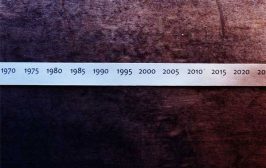-
See the Savings Clearly: Save 20% On LASIK , Find More
*Must mention this promotion and be treated in April of 2024 to qualify. 20% off standard price of Wavelight procedure. Cannot be combined with any other offers.
Debunking Common Eye Surgery Myths
Mention to anyone that you’re considering laser vision correction, and you’re bound to hear some opinions — and myths — about the procedure from your friends and neighbors.
“I had lots of people tell me things that were simply not true,” said Jon, who recently underwent the procedure. “I’m glad I did my own research and made a decision based on facts rather than misconceptions.”
With 16 million procedures performed in the U.S. as of 2011, and more than a million performed each year, LASIK has become a safe, reliable method of vision correction for many patients. Yet, several myths about the procedure remain – here are four common ones debunked:
Myth # 1: LASIK Doesn’t Last
Many LASIK patients worry they will need a second procedure — called an enhancement — after the initial procedure. While some patients do need an enhancement, most have excellent vision correction after one round of LASIK. Industry research shows less than 10 percent of LASIK treatments require enhancements after surgery.
“It’s a great question I get all the time from patients,” said Vincent Marino, D.O., a Cincinnati-based LASIK doctor. “In my experience, about 5 percent of patients need to come in for a re-treatment or enhancement within the first two years. That means most people will never need another LASIK procedure.”
Myth #2: You Must Be Over 30 to Get LASIK
This is simply not true. While laws require LASIK patients to be over 18 (or 21 for certain procedures), there is no other age requirement to have successful LASIK surgery. Ideal LASIK candidates have stable prescriptions, or in other words, their vision hasn’t changed in at least a year. Your doctor will take precise measurements to determine if your corneal shape and size are right for LASIK. There is no “magic” age when a patient’s prescription stabilizes, although this often happens in a patient’s twenties. A stable prescription is what determines when a LASIK procedure is best, not the patient’s age.
A similar myth is that you can be “too old” to have LASIK. The procedure has been successfully performed on patients over 60.
Myth # 3: All LASIK is Equal
The technology and equipment used for LASIK has advanced in recent years to the point that most providers are performing all-laser LASIK — that means a laser will be the only instrument that touches your eye. The all-laser procedure offers enhanced precision and stability.
“The entire procedure is now computer-driven, and that’s been huge as far as safety, precision and predictability goes,” said Dr. Marino. “It’s more comfortable for both the doctor and the patient.”
Not all providers offer two of the more advanced technologies: Wavefront-optimized and Wavefront-guided LASIK. These types of LASIK, referred to as “custom” LASIK, use three-dimensional measurements of your eye to guide the laser in reshaping your cornea. This allows extremely precise vision correction that was not available with traditional LASIK.
“With these technologies, we can recreate the round shape of the cornea to decrease the chance of having problems with ‘glares’ and ‘halos’ at night,” Dr. Marino said.
“My commitment to patients is to correct their vision in the safest, most precise way possible, and I will choose the laser platform that will accomplish that.”
YOU MIGHT ALSO LIKE...
VISION CENTERS NEAR ME
Enter your zip code, city, or a doctor name below to find a vision center.
Find out if LASIK is right for you
Congratulations!
Your vision issues can most likely be corrected with a LASIK procedure. Schedule a free consultation today.
Answer 5 simple questions to see if you are a candidate
What is your age group?
Do you wear...
With corrective lenses, do you have...
Have you ever been told that you have astigmatism?
Have you ever been told that you have dry eyes?
Request an Information Kit
Learn about your surgeon, the latest advanced technology, procedures, options and benefits, financing options, and what to expect from your LASIKPlus experience.









